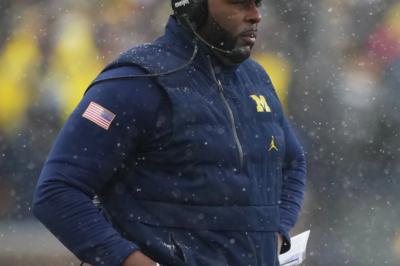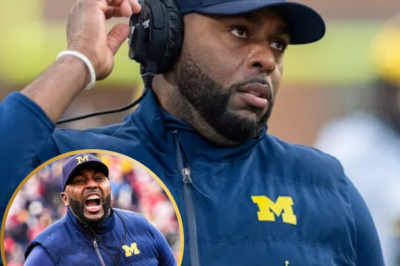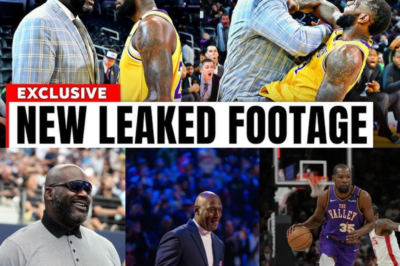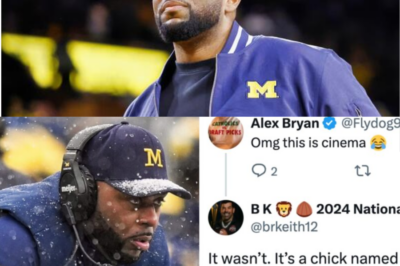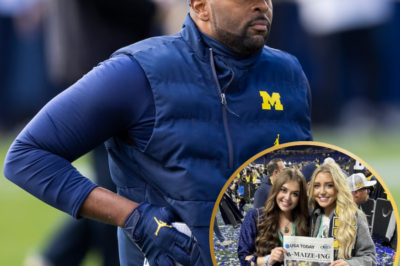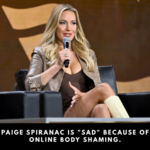SCANDAL ERUPTS at Oklahoma City University. Their top advisor has RESIGNED following a controversial post by Charlie Kirk about “satisfaction” from an event on campus. You won’t believe what happened next.
In a move that has sent shockwaves through the academic community and ignited a firestorm on social media, Oklahoma City University has abruptly terminated its Director of Counseling Services, a transgender therapist, in the tumultuous aftermath of a controversial campus visit by conservative commentator Charlie Kirk.
The dismissal, reportedly precipitated by the therapist’s personal social media posts expressing “satisfaction” with the disruptive protests that marked the event, has become a lightning rod, transforming a local campus incident into a national case study.
This event sits at the volatile intersection of free speech, institutional responsibility, professional ethics, and the deeply personal politics of identity. It raises profound, uncomfortable questions that are echoing far beyond the borders of the OCU campus: Where is the line between a public employee’s personal expression and their professional obligations?
How does a university balance its commitment to open dialogue with its duty to foster a safe and inclusive environment?
And what happens when the very individuals tasked with safeguarding student mental health become central figures in a blistering ideological conflict? This is not just the story of a firing; it is a story about the fractured soul of the modern American university.
(The Precipitating Event: Charlie Kirk’s Visit and the Campus Upheaval)
To understand the dismissal, one must first understand the powder keg into which the spark was dropped.
The visit of Charlie Kirk, founder of the conservative nonprofit Turning Point USA, was never going to be a quiet affair. Kirk is a figure synonymous with the front lines of the American culture war, a speaker known for his vehement critiques of progressivism, “woke” ideology, and transgender rights.
For many students and faculty, particularly those from LGBTQ+ and other marginalized communities, his invitation to speak on campus was not seen as an exercise in intellectual diversity, but as a legitimization of viewpoints they experience as fundamentally hostile to their existence and dignity.
The event itself was, by all accounts, tense and chaotic. Protests, both organized and spontaneous, erupted. Students stood and turned their backs during the speech.
Chants from protesters and counter-chants from supporters created a cacophony. Online, the battle raged with equal ferocity, with live-tweets and Instagram stories framing the event as either a courageous stand for free speech or a necessary resistance against bigotry.
The university was placed in a nearly impossible position, attempting to uphold its stated values of both “free inquiry” and “inclusive community,” two principles that, in this instance, seemed to be on a direct collision course.
The campus was left polarized, raw, and in need of healing—precisely the moment when the services of the Office of Counseling would be most critically needed.
(The Social Media Post: A “Satisfaction” That Sparked an Inferno)
In the immediate, emotionally charged hours following the event, the now-former Director of Counseling Services took to a personal, but publicly accessible, social media account.
The specifics of the post have been the subject of intense scrutiny and debate, but reports consistently indicate that the therapist expressed a sense of “satisfaction” or “vindication” regarding the protests and the overall outcome of the Kirk event.
The post did not explicitly call for violence or disruption, but its tone was interpreted by many as an endorsement of the silencing of a speaker and a celebration of the event’s contentious atmosphere.
The reaction was swift and bifurcated. To some students, faculty, and external observers, particularly those who had participated in the protests, the post was a validating expression of solidarity.
It signaled that a key figure in the university’s support structure understood their pain and stood with them against what they perceived as hate speech.
For this group, the therapist’s sentiment was a reflection of a commitment to social justice, a core value they believe the university should champion.
However, to others—including students who supported Kirk’s right to speak, donors, political commentators, and segments of the broader public—the post was a shocking and unprofessional breach of ethics.
They argued that a therapist, and especially the director of a university counseling center, holds a unique position of trust and must remain a neutral, safe harbor for all students, regardless of political belief.
By publicly taking a side in a bitterly divisive political event, critics contended, the therapist had irrevocably compromised the perceived neutrality of the entire Counseling Services department.
How could a student who supported Charlie Kirk, or even one who was simply confused by the event, now trust that therapist to provide unbiased, confidential care? The post, in their view, transformed the counseling office from a sanctuary into a politically aligned entity.
(The Institutional Response: Investigation and Termination)
The university administration was suddenly facing a crisis within a crisis. The initial controversy of hosting Kirk was now compounded by the actions of a senior staff member.
According to sources close to the administration, formal complaints were filed almost immediately against the therapist, citing a hostile work environment and a violation of professional standards of conduct.
OCU’s Human Resources department, in conjunction with the Office of the General Counsel, likely launched a rapid internal investigation.

This process would have involved reviewing the social media posts, the university’s social media policy for employees, the ethical guidelines of the American Counseling Association (ACA), and interviewing relevant parties. The central question before the administration was a legal and ethical tightrope:
Did the therapist’s right to free speech as a private citizen, protected by the First Amendment, outweigh the university’s interest in maintaining a functioning, impartial counseling service and a stable educational environment?
For the administration, the calculation was multifaceted. There were potential legal liabilities, concerns about donor relations, pressure from powerful external political groups, and the ever-present need to manage the university’s public image.
But there was also the internal campus climate to consider. Firing the therapist risked alienating a significant portion of the student body and faculty, who would see it as a punitive action against a marginalized individual for expressing solidarity with their community.
It could be interpreted as the university siding with an external provocateur over its own dedicated staff and students.
Ultimately, the decision was made. In a terse, formal statement, Oklahoma City University announced the termination of the Director of Counseling Services, effective immediately.
The statement, typical of such personnel matters, was vague, citing a “violation of university policies” and a commitment to ensuring that “all campus resources remain dedicated to the unbiased support and well-being of every student.”
The lack of specific detail did little to quell the outrage; it simply provided a vacuum into which both sides poured their narratives.
(The Fallout and the National Echo Chamber)
The firing did not resolve the conflict; it simply escalated it to a national stage. The story was picked up by conservative media outlets like The Daily Wire and Fox News, who framed it as a victory for common sense and professional ethics, a necessary action against the “woke” infiltration of higher education.
The narrative was one of a university finally holding an activist employee accountable for imposing a political ideology onto their professional role.
Conversely, progressive and LGBTQ+ advocacy groups, such as the Human Rights Campaign and GLAAD, condemned the termination as a blatant act of discrimination and anti-trans retaliation. They argued that the therapist was being punished not for a violation of policy, but for the content of their speech—speech that defended a vulnerable community.
Petitions circulated, demanding the therapist’s reinstatement, and prominent academics took to Twitter and LinkedIn to decry what they saw as the silencing of marginalized voices and the chilling effect it would have on other LGBTQ+ and socially conscious faculty and staff.
On the OCU campus itself, the atmosphere remained tense. Student government meetings became heated. Open forums hosted by the administration were packed with emotional testimonials from both sides.
Some students expressed relief, feeling that the counseling center could now return to being a politically neutral space. Others spoke of a profound sense of betrayal and fear, stating that the firing signaled that the university’s support for its LGBTQ+ students was conditional and fragile.
The very department meant to help students navigate trauma was now, itself, a source of trauma for many.
To fully grasp the complexity of this event, we must dissect the competing ethical frameworks at play.
Free Speech vs. Professional Conduct: This is the core legal and philosophical tension. The First Amendment protects government employees (including those at public universities) from being punished for speech as private citizens on matters of public concern. However, this protection is not absolute.
Speech that disrupts workplace efficiency, undermines a public employer’s mission, or compromises close working relationships is often unprotected.
At a private institution like OCU, the legal protections for employee speech are even weaker. The university had greater latitude to enforce its internal policies. The debate, therefore, shifts from a purely legal one to a moral and strategic one: even if OCU could fire the therapist, should it have?
Lost in the high-level debates about policy and ideology are the human stories. For the therapist, this represents a profound professional and personal catastrophe.
They have lost their livelihood and their career platform, and have been thrust into the center of a vicious national media storm, all while likely dealing with the personal fallout of being a publicly outed transgender individual in a politically charged context.
For the students, the impact is equally profound. Students who relied on this specific therapist for support now face a rupture in their care and the daunting task of starting over with a new counselor, if they can bring themselves to trust the system again.
The entire LGBTQ+ community on campus has been sent a powerful, disheartening message about their place within the institution. Conversely, students with conservative leanings, who may have felt marginalized and silenced during the Kirk event, may now feel that the university has taken a step toward re-balancing the scales, though the underlying climate of hostility likely remains.
The firing of the transgender therapist at Oklahoma City University is a microcosm of the conflicts tearing at the fabric of American society and its institutions of higher learning. It was not a simple case of right versus wrong, but a tragic collision of deeply held, valid principles.
There are no clean heroes or villains in this story, only a community left more fractured and a nation watching closely.
The incident sets a powerful, and for many, a frightening, precedent. It signals to university employees across the country that their off-the-clock, personal expressions on politically charged issues can have severe professional consequences.
It demonstrates the immense power of external political pressures to shape internal university affairs. And it reveals the near-impossible position in which universities find themselves, trying to be all things to all people in an era of intense polarization.
The true test for Oklahoma City University, and for all institutions facing similar dilemmas, lies in what happens next. How will it rebuild trust?
How will it demonstrate a genuine, actionable commitment to all its students, of all beliefs and identities?
The firing may have closed one chapter of this crisis, but it has opened a much larger, more difficult one: the long, arduous work of healing a divided community.
The story of the Charlie Kirk visit and its aftermath is far from over; its final chapters have yet to be written.
News
JUST LEAKED: The Raw 911 Audio From Sherrone Moore’s Arrest — Hear The Chaotic Dispatch Tape EVERYONE Is Talking About.
JUST LEAKED: The Raw 911 Audio From Sherrone Moore’s Arrest — Hear The Chaotic Dispatch Tape EVERYONE Is Talking About….
JUST IN: Jennifer Welch DROPS BOMBSHELL on co-star! She’s calling Erika Kirk a “GRIFTER” and demands she be “KICKED TO THE CURB”!
JUST IN: Jennifer Welch DROPS BOMBSHELL on co-star! She’s calling Erika Kirk a “GRIFTER” and demands she be “KICKED TO…
SHOCKING: Internet Detectives Allegedly Uncover Sherrone Moore’s Mystery Woman—See The Photos That Have Everyone Talking!
SHOCKING: Internet Detectives Allegedly Uncover Sherrone Moore’s Mystery Woman—See The Photos That Have Everyone Talking! In the age of social…
Shaquille O’Neal Slams LeBron James and Kevin Durant for Mocking Michael Jordan: An In-Depth Look at the NBA’s Greatest Debate
Shaquille O’Neal Slams LeBron James and Kevin Durant for Mocking Michael Jordan: An In-Depth Look at the NBA’s Greatest Debate…
Social Media Investigators Uncover Female Michigan Staffer’s Involvement in Sherrone Moore’s Scandalous Affair: An In-Depth Report
Social Media Investigators Uncover Female Michigan Staffer’s Involvement in Sherrone Moore’s Scandalous Affair: An In-Depth Report In recent days, social…
Sherrone Moore’s Female Mistress Revealed to Be Daughter of NFL Front-Office Executive in Shocking Turn of Events
Sherrone Moore’s Female Mistress Revealed to Be Daughter of NFL Front-Office Executive in Shocking Turn of Events In the high-stakes…
End of content
No more pages to load


